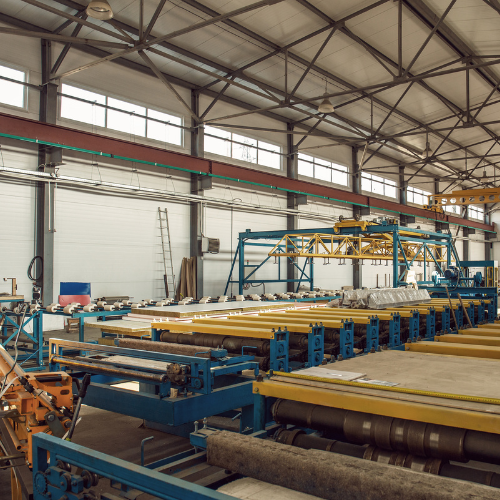As global food demand rises and climate concerns intensify, efficiency improvements are becoming increasingly crucial for operational sustainability. The higher the energy use, the higher the operating costs and the higher the resulting Scope 2 emissions.
Research shows that refrigeration accounts for around 30–50% of electricity consumption in industrial applications like F&B, so optimizing existing systems presents a significant opportunity for cost savings without the capital expense of complete system replacement.
Here are 10 strategies for optimizing your F&B refrigeration system to improve efficiency and reduce running costs and emissions:
1. Optimize Temperature Set Points
One of the simplest yet most effective adjustments is ensuring refrigeration set points are accurately calibrated. Many facilities over-cool their storage areas due to concerns about equipment failure, wasting substantial energy. An increase in frozen food store temperature from -25°C to -20°C (-13°F to -4°F) can save 10–15% of refrigeration energy without compromising product quality.
Regular review of set points against actual product requirements and seasonal adjustments can significantly reduce energy consumption while maintaining food safety standards.


2. Implement a Robust Maintenance Program
Well-maintained refrigeration systems operate at peak efficiency. Establish a regular maintenance schedule that includes regularly inspecting for refrigerant, checking for damaged components that impede system performance, and ensuring proper insulation on pipes while addressing any areas showing condensation or frosting.
Develop a comprehensive maintenance plan that includes both routine checks by in-house staff and periodic professional assessments. This preventative approach not only improves efficiency but also extends equipment life, reduces unexpected downtime, and helps maintain consistent product quality.
Regular maintenance creates a foundation for all other efficiency improvements, ensuring that each component operates within its optimal parameters.
3. Regular Coil and Condenser Cleaning
Keeping condenser and evaporator coils clean is crucial for refrigeration efficiency. Dust, dirt, and debris accumulate on these surfaces over time, acting as insulators that severely restrict heat transfer.
For condensers, which reject heat to the environment, even minor fouling can cause temperature increases that significantly impact performance – a 1°C (1.8°F) rise in condenser temperature increases running costs by 2-4%.
Establish a scheduled cleaning program that includes removing debris from intake grilles, washing coils with appropriate solutions, and ensuring unrestricted airflow around heat exchange surfaces. This simple maintenance practice delivers immediate efficiency improvements without requiring system modifications or significant investment.


4. Implement Advanced Defrost Management
Effective defrost management represents a significant opportunity for energy savings in refrigeration systems.
Rather than relying on time-based defrost cycles that operate regardless of actual frost conditions, implement demand-based defrost that initiates only when necessary. Frost buildup forces refrigeration systems to work harder as the ice layer acts as an insulator between the evaporator and the refrigerated space. Modern defrost-on-demand controllers use either cooling runtime or sensors to activate defrost cycles only when required, significantly reducing both the frequency and duration of energy-intensive defrost operations. It is also important to properly adjust and monitor the defrost initiation, gas flow, and duration so at to reduce the overall energy impact.
This intelligent approach maintains system efficiency while reducing the temperature fluctuations that conventional time-based defrost schedules create.
5. Minimize Air Changes and Heat Infiltration
Air infiltration can account for up to 30% of the total heat load in cooled spaces. Reducing the heat load will mean reducing the cooling work the refrigeration system has to do, translating into a more efficient system and less energy wasted.
To prevent cool air escape, install self-closing doors and strip curtains at entrances to refrigerated areas. Ice build-up on storeroom floors and walls indicates excessive air exchange. For areas with high traffic, consider installing roll-fast doors activated by push buttons or vehicle sensors or incorporating airlocks between refrigerated and ambient spaces.


6. Upgrade to Electronic Controls
Modern electronic controls transform refrigeration efficiency through integrated digital management systems. At their core, electronic expansion valves continually adjust refrigerant flow based on real-time cooling demands, eliminating the waste inherent in fixed mechanical valves while delivering quick ROI.
This precision is enhanced by strategic temperature probe networks that provide granular condition data throughout refrigerated spaces, allowing systems to operate with minimal safety margins rather than wasteful buffers.
Energy management software completes this setup by analyzing performance data across all components and locations, revealing hidden inefficiencies that manual monitoring would miss.
Together, these complementary technologies create responsive refrigeration systems that maintain precise temperatures while significantly reducing energy consumption.
7. Install Variable Speed Drives (VSDs)
Many refrigeration applications run at partial load but use mechanical control methods that waste energy. Installing VSDs on pumps, compressors, and fans can reduce energy consumption by 25% or more by matching motor output to actual system requirements. This is particularly effective for oversized systems (many are oversized by more than 20%) and applications with variable-duty requirements.


8. Reduce Internal Heat Loads
Minimizing heat sources within refrigerated spaces reduces system workload. Projects targeting internal heat reduction often achieve payback in less than three years.
Strategies include replacing traditional lighting with energy-efficient LEDs connected to motion sensors, upgrading evaporator fan motors to electronic commutated (EC) low-power versions, and allowing products to cool to ambient temperature before introducing them to refrigerated spaces
9. Implement Smart Operational Procedures
Operational changes can yield significant efficiency improvements without major investments. Strategies include:
- Consolidating partial loads (one cold storage area at full load is more efficient than two at partial load);
- Implementing special night and out-of-hours procedures with altered temperature and pressure setpoints;
- Deploying night blinds over open-air cases to trap cold air and reduce electrical demand; and/or
- Using product simulation probes to measure actual food temperatures rather than just air temperature.
These procedural adjustments require minimal capital investment but can significantly improve system performance through smarter resource utilization.


10. Consider Adding Heat Recovery
Refrigeration systems generate significant waste heat that can be captured and repurposed. Adding heat pumps to existing systems can provide renewable heating or hot water for other processes, reducing fossil fuel consumption. Industrial heat pumps are extremely efficient, requiring only a third of the energy needed for traditional water heating, and can often handle hot water needs up to 90°C (194°F).
By implementing these strategies, F&B manufacturers can significantly improve the efficiency of aging refrigeration systems, reduce operational costs, and minimize environmental impact while maintaining product quality and safety standards – all without taking on the capital expenditure of replacing their entire refrigeration system.
Ask the Experts
Let CIMCO Refrigeration help you improve your refrigeration system’s efficiency without having to replace your chiller. With more than 110 years of experience and a long list of successful projects in the Food & Beverage sector, we have proven strategies for improving efficiency.
Related Posts

Industrial Heat Pumps are the Past, Present and Future

Interconnected Efficiency: Leveraging Ammonia Heat Pumps for Sustainable Manufacturing



